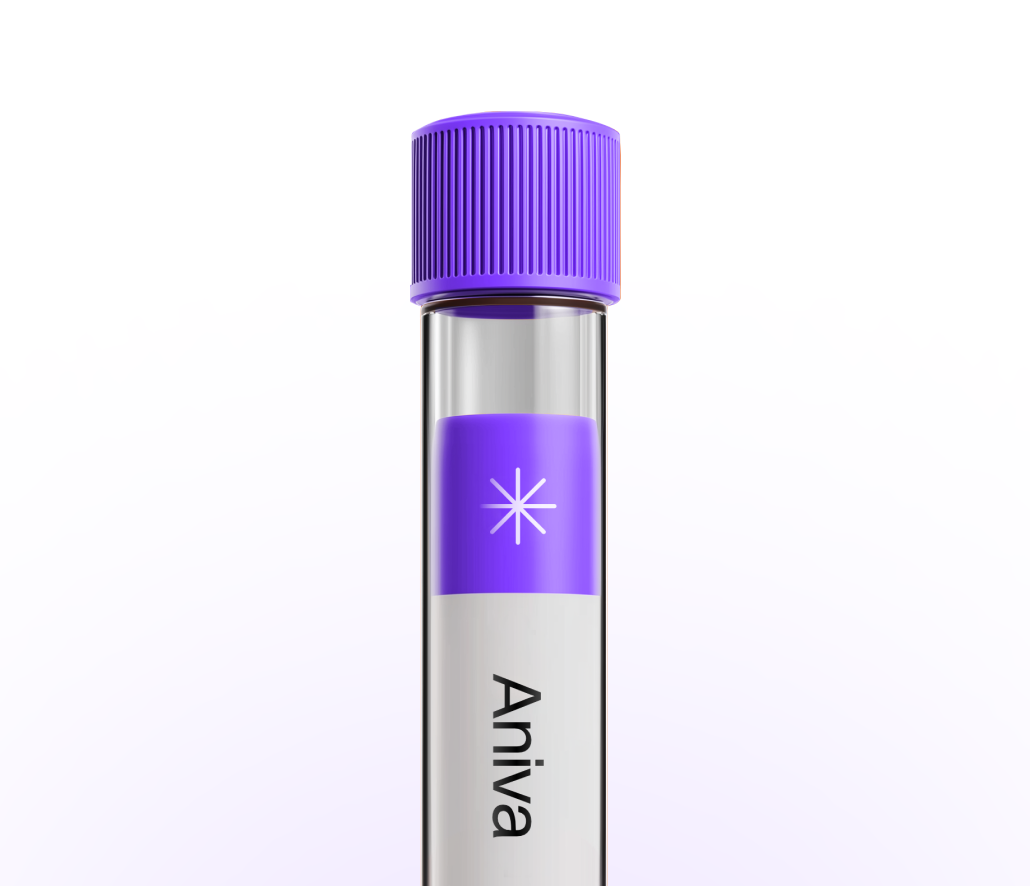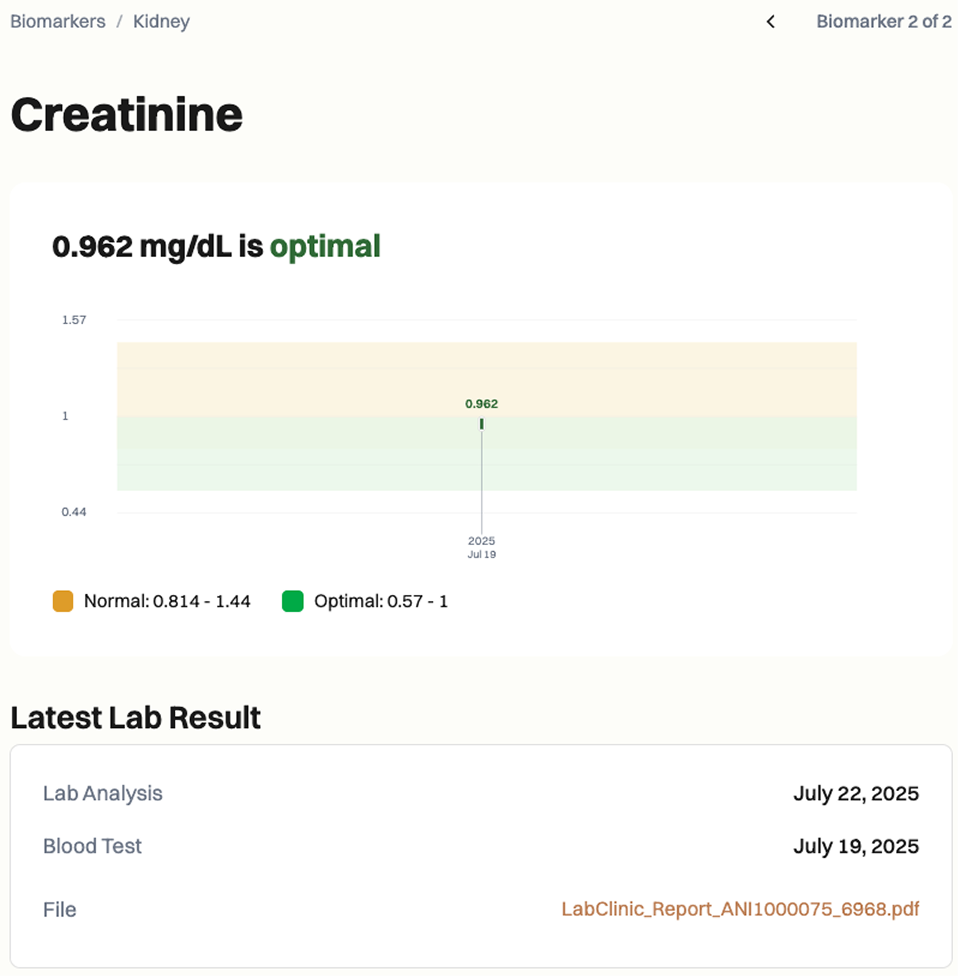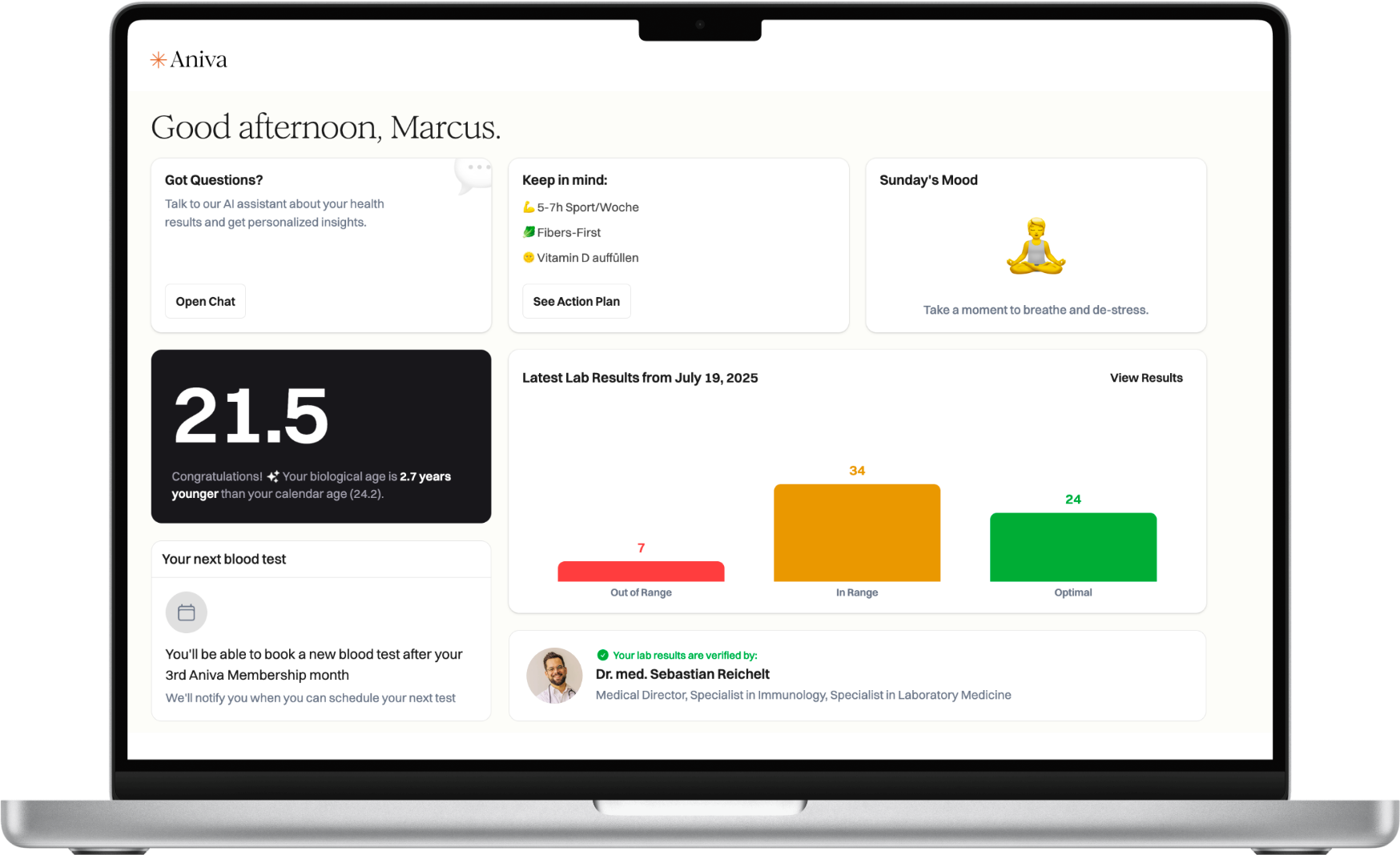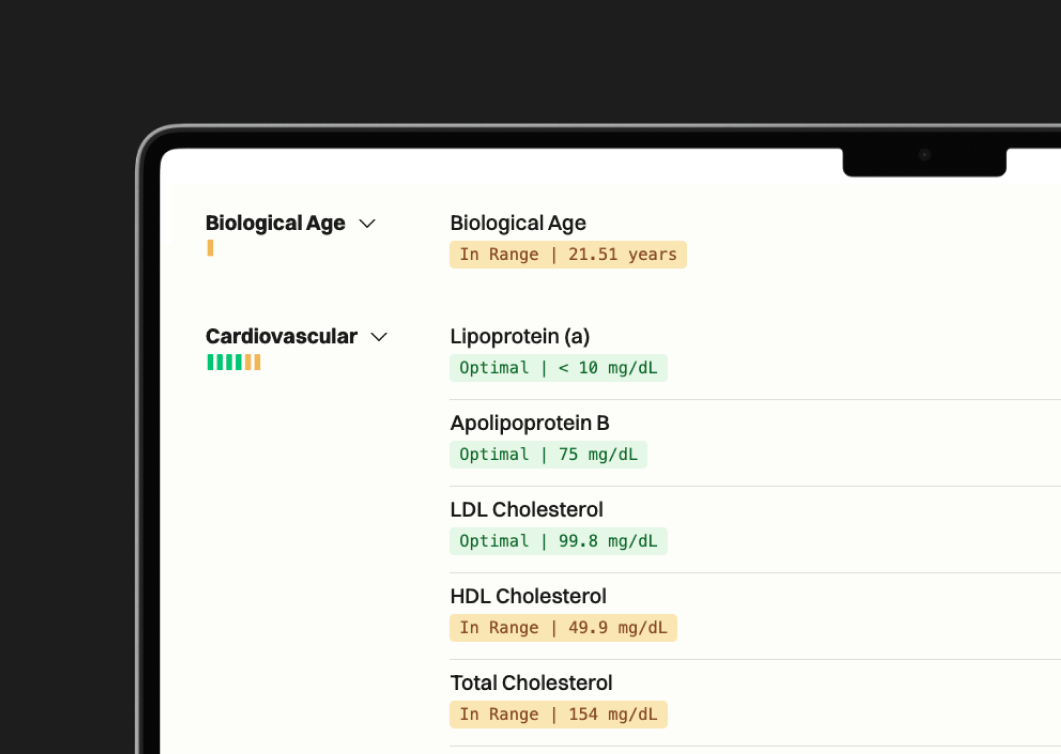A simple ratio comparing ferritin to albumin to reflect inflammation and nutrition balance.
Securely stored in EU
Cancel anytime
Test 100+ biomarkers

Less than 5 minutes waiting time. One
simple test at one of our 20+ locations.
Get your lab reports within one week.
Accessible on our app and per PDF.
All your health records stored
in a single, convenient place.

This ratio can help show whether inflammation or low protein status may be influencing iron results. Clinicians may use it alongside iron studies when anemia, chronic inflammation, or malnutrition is suspected. It can guide follow-up like checking CRP, a full iron panel, or liver tests, and tracking trends over time. You can test this marker with Aniva across Germany and Finland.
This ratio can help show whether inflammation or low protein status may be influencing iron results. Clinicians may use it alongside iron studies when anemia, chronic inflammation, or malnutrition is suspected. It can guide follow-up like checking CRP, a full iron panel, or liver tests, and tracking trends over time. You can test this marker with Aniva across Germany and Finland.
High: More ferritin relative to albumin. This may point to inflammation, infection, tissue injury, iron overload, or lower albumin from illness or poor intake. Consider checking CRP, iron studies, and liver tests, and review recent illness or exercise.
Low: Less ferritin relative to albumin. This may happen with iron deficiency or blood loss, or from dehydration raising albumin. Discuss diet and bleeding risks and consider ferritin, transferrin saturation, and a CBC. This ratio is not guideline-endorsed; no standardized cutoffs. Trends and your clinical context matter most.



Common factors that can skew results include recent infection, fever, vaccination, or surgery (ferritin can rise); strenuous exercise; iron supplements; heavy alcohol use; pregnancy and chronic liver disease (albumin can fall); dehydration (albumin can appear higher); and high-dose biotin, which may interfere with some ferritin immunoassays. Test at a similar time of day when tracking trends, and tell your clinician about all medicines and supplements.
Special situations … repeat or adjust interpretation during acute illness, after surgery, in pregnancy, or with chronic kidney or liver disease.
What does a high result mean? It shows more ferritin compared with albumin, often seen with inflammation or lower protein status. Your clinician will interpret it with other tests.
What can affect my results? Recent illness, surgery, hard workouts, pregnancy, dehydration, iron supplements, liver or kidney disease, and high-dose biotin can all shift results.
Do I need to fast? No. Fasting is not required for this ratio.
How often should I test? It depends on your situation. Many people recheck in 4–12 weeks to watch trends or as advised.
How long until results are ready? Most labs report results in 1–3 business days.
What should I discuss with my clinician? Share symptoms, diet, supplements, alcohol use, medications, and recent illness. Ask if you need CRP, iron studies, or liver tests next.



One annual blood test (100+ biomarkers)
Clinician-reviewed insights
Personalized action plan
Access to our AI Concierge
Access to curated products


63%
44%
70%